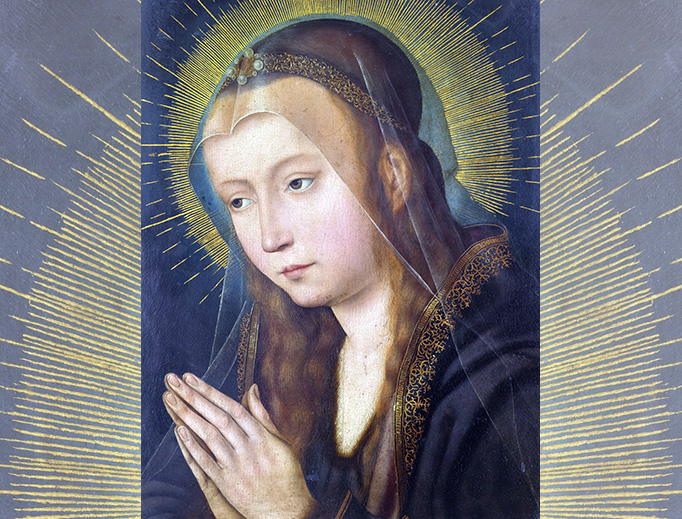How I Overcame My Objections to Mary and Became Catholic
I used to see the Blessed Virgin Mary as a problem. Now I see her as a problem solver, the untier of knots.

In the spring of 2005, my wife and I were on staff with an interdenominational (i.e., Protestant) ministry in the New York/New Jersey area, and we took the opportunity to audit a class on the philosophy of C.S. Lewis and J.R.R. Tolkien with Peter Kreeft. It was in conversation with him that I came to the conclusion that Catholicism was not a heresy after all, but I still thought that Catholicism was illogical and unbiblical.
Over the course of the next year, I came to realize that biblical interpretation was not as simple as I would have liked it to be, and I also came to better understand what is logical and what is not through a heavy diet of Plato, Aristotle, C.S. Lewis and G.K. Chesterton. I had also come to learn that many of my objections to Catholicism were largely misunderstandings or oversimplifications of Church teaching, but I still saw one major contradiction in Catholicism, which was enough reason for me to not take it too seriously. I didn’t want to take it seriously, so this contradiction was convenient.
This was it: Romans 3:23 clearly says that all have sinned and fall short of the glory of God. But the Church teaches that Mary never sinned. That entails a contradiction.
Or so I thought. Once again, it turns out that biblical interpretation is not as simple as I would have liked it to be.
In that following spring I happened to be auditing another course with Peter Kreeft. I brought up my objection to see how he would respond.
In his typically simple and straightforward manner, he pointed out that the noun is missing from the quantifier “all.” In other words, all what have sinned? Presumably, all men, meaning all human beings. But if all human beings means literally every single human being, that would include Jesus Himself. Imagine drawing a circle that represented all human beings. If Romans 3:23 is taken literally, that entire circle represents people who have sinned. But Jesus is in that circle, too.
“But he was also God.” I could hear myself rebutting. But I also knew the reply. “Yes, but he was still fully human. If Jesus is not in the circle of all humans, then the Incarnation is a lie. He either was fully human or not.”
Therefore, there must be at least one exception to Romans 3:23 for Jesus, because He did not sin. So, the phrase, “all have sinned” does not refer literally to every single human being, even though it is not explicitly stated by Paul in that passage. That also leaves room for one more exception: Mary.
And thus I watched my last Catholic contradiction go up in smoke. Catholicism was logically coherent after all. In that moment, I wasn’t really surprised because this fit the pattern followed by all my other logical objections. In the big picture, though, this was shocking. Previously, I had thought few things were more ridiculous than Catholicism. Now, I had to assent to the fact that Roman teachings at least made sense on paper.
I was still far from believing that Catholicism is true. That came later as I considered the big picture of the source of Scripture itself and its relation to the Church, but Catholicism was now a viable possibility.
What is even more shocking to me now, at this point in my life, is that Mary went from being an objection to becoming my Blessed Mother. I used to see her as a problem. Now I see her as a problem solver, the untier of knots. I once wanted to distance myself from any kind of admiration for her. Now I imagine her wrapping her mantle around me as we kneel together before the Sacrifice of her Son during Mass.
This type of transformation is far beyond merely intellectual change. I have heard it said that you can’t teach someone a lesson if he is not enrolled in the course. Without the preparatory work of the Holy Spirit, I would not have been open to Kreeft’s exposition of the passage from Romans. Even logic, perhaps logic least of all, can penetrate a hardened heart. I have little doubt that Mary had a hand in that preparation. How sweet and beautiful, how much like her Son, that she drew me to herself even as I tried to distance myself from her.












